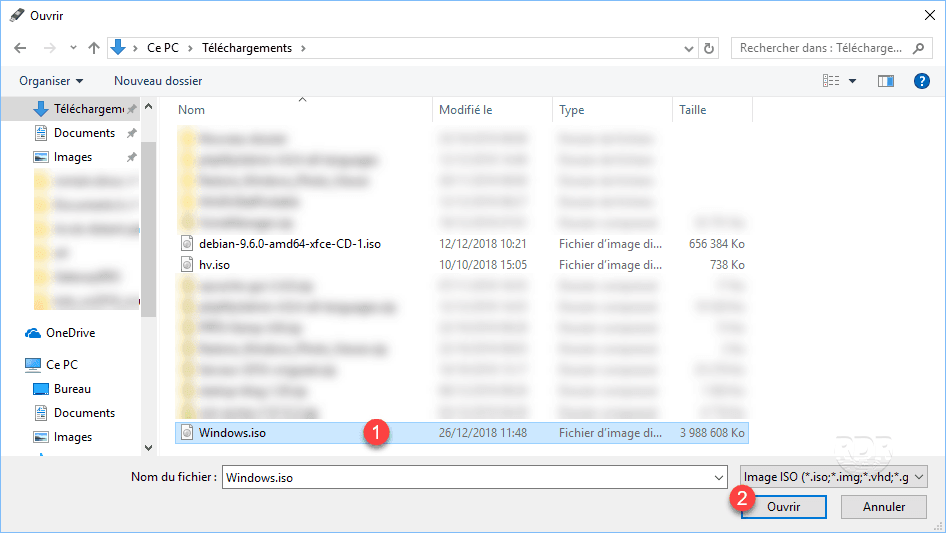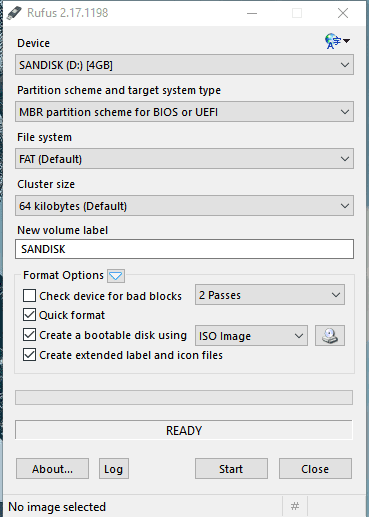

Once at this point, we have to establish different options, which in one way or another will define the process that will be carried out. Once this is ready, we will proceed with the execution of the exe file from Rufus application, if possible it is recommended to do it from admin action and when ready we can see that a start window opens. To begin with, you must have previously logged in la USB key to your PC so that the Rufus tool can detect it. However, these options are variable, as long as the user's taste decides. Likewise, it is important to say that the installation we are going to perform will be type MBR "Partitioning" and not GPT. In this tutorial we will be based on installing a USB stick Windows 10 PRO Build 1511 (64-bit) on a computer with a configuration BIOS and which in turn has boot mode enabled precisely for UEFI and legacy support, and similarly Secure Boot disabled. In our example, an ISO image of Windows 10 November update will be used.
Rufus iso to usb windows 10 tutorial how to#
Rufus iso to usb windows 10 tutorial install#

Either for security reasons, or because of the need to clean your device a little, in order to carry out this action, it is necessary that we go to a specific means of installation.

One of the most common things to do when we own a PC is to format it and install an operating system.


 0 kommentar(er)
0 kommentar(er)
